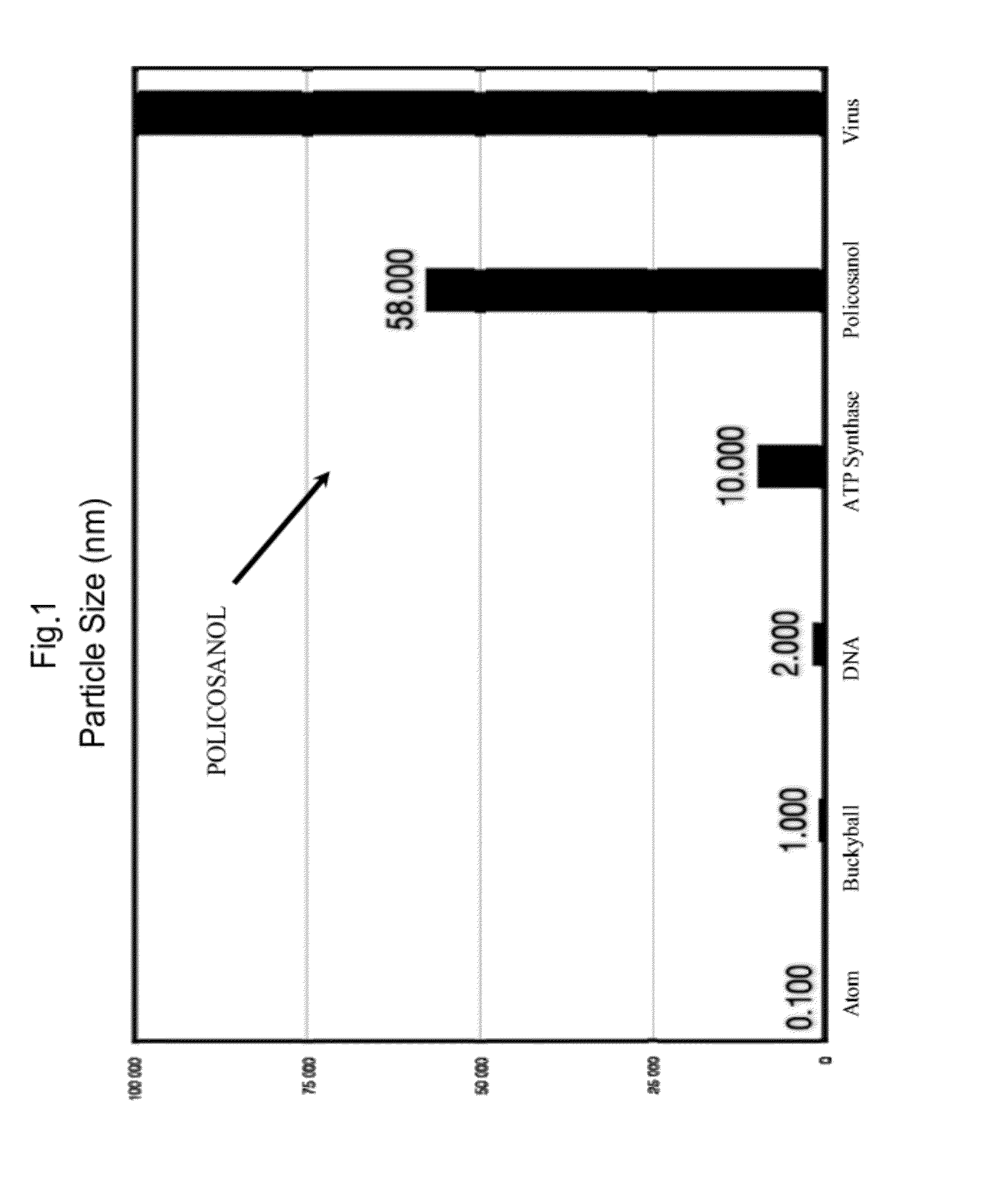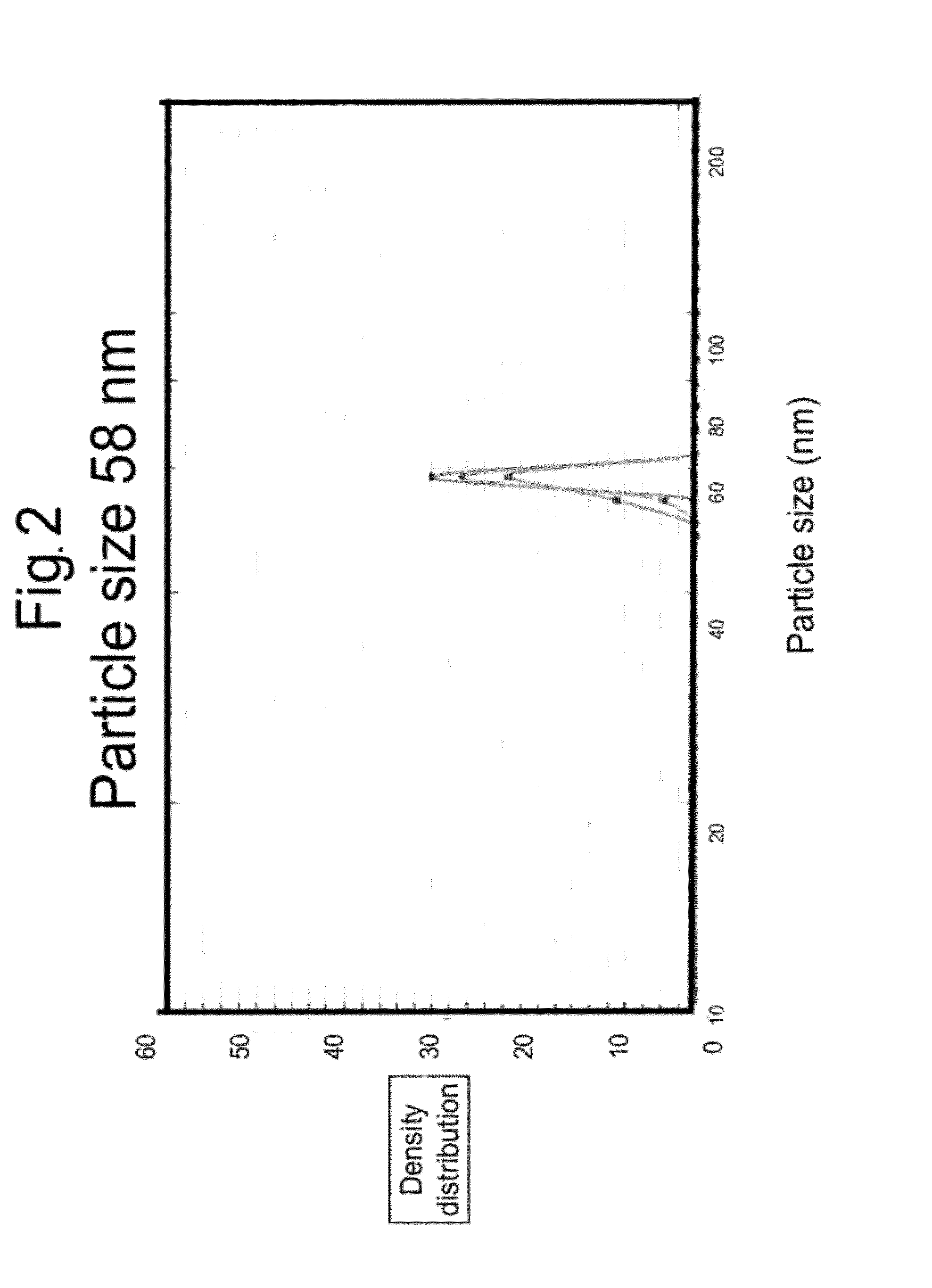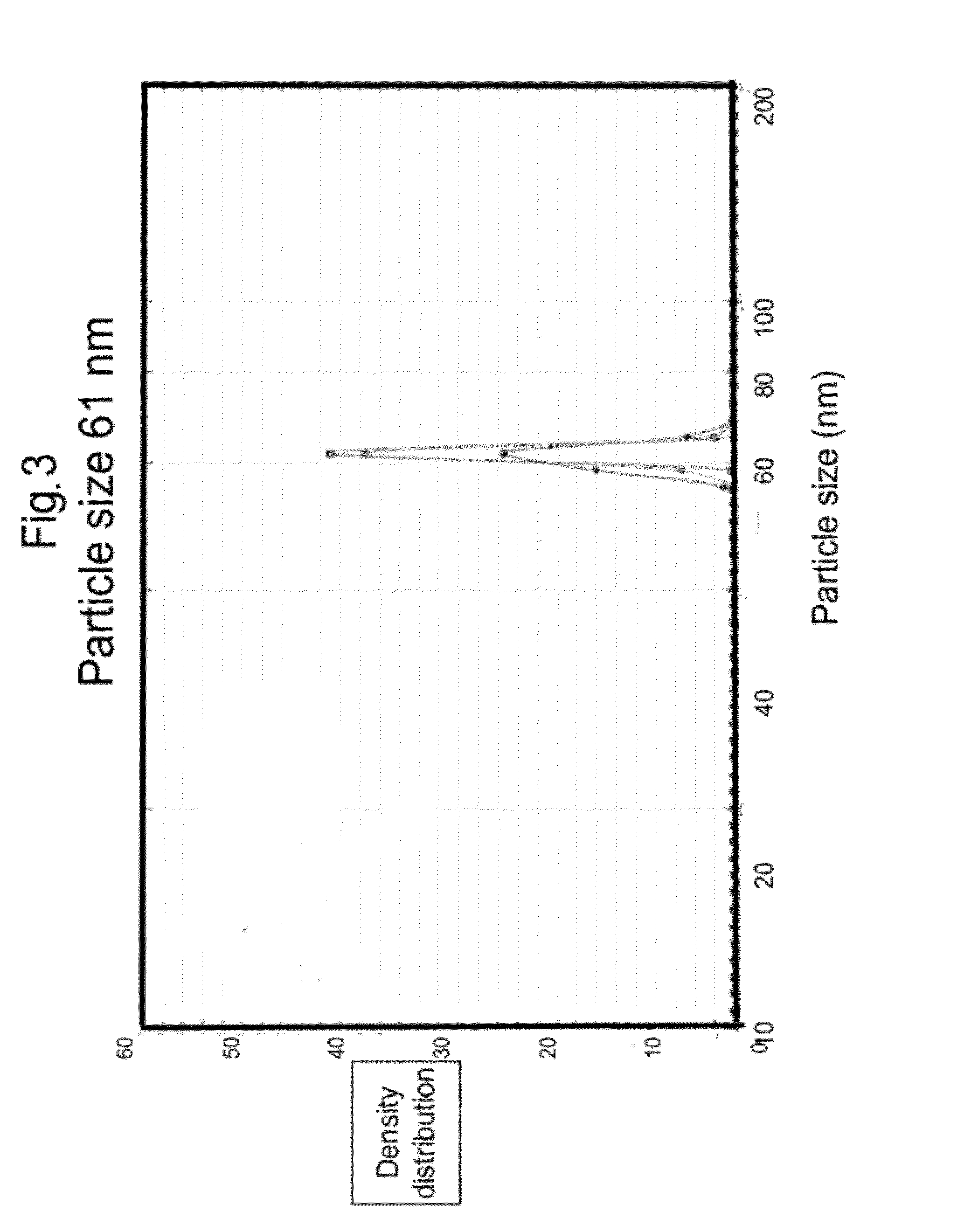Policosanol nanoparticles
a technology of policosanol and nanoparticles, which is applied in the field of nanoparticle compositions, can solve the problems of inability to verify the claims made in conjunction with the original research, the utility of policosanol formulations on other metabolic and physiologic parameters has produced similarly negative results, and the utility of policosanol formulations on other metabolic and physiologic parameters. achieve the effects of reducing systolic and dias
- Summary
- Abstract
- Description
- Claims
- Application Information
AI Technical Summary
Benefits of technology
Problems solved by technology
Method used
Image
Examples
example 1
Preparation of a Liquid Formulation Containing 1% Policosanol or Octacosanol
[0162]1. Prepare a water solution (100 mL) containing sucrose laureate (0.1-0.5%) and warm up to 80-85° C. under stirring.[0163]2. In a beaker, weigh the policosanol or octacosanol (1 g) and at least one excipient or stabilizer (2-5 g) and warm up to 80-85° C. under stirring.[0164]3. Pour the sugar ester solution into the beaker with policosanol or octacosanol and the excipient under strong stirring and keep at 80-85° C. for 5 min under stirring. When the temperature is below 50° C., the formulation becomes transparent.[0165]4. Switch off the heater and keep under moderate stirring until room temperature is reached.[0166]5. Add a preservative (e.g., potassium sorbate, sodium benzoate, citric acid anhydrous).[0167]6. Put the solution into the bottles.
example 2
Formulation Having 1% Policosanol or Octacosanol
[0168]
COMPONENT%Vitamin E TPGS4Policosanol or Octacosanol1Sugar ester0.95Potassium sorbate0.12Sodium benzoate0.2Citric acid anhydrous0.1Water93.63
Formulation Having 2% Policosanol or Octacosanol
[0169]
COMPONENT%Vitamin E TPGS6Policosanol or Octacosanol2Sugar ester0.92Glycerin0.12Potassium sorbate0.12Sodium benzoate0.2Citric acid anhydrous0.1Water90.54
Formulation Having 3% Policosanol or 3% Octacosanol
[0170]
COMPONENT%Vitamin E TPGS8Policosanol or Octacosanol3Sugar ester0.89Glycerin0.18Potassium sorbate0.12Sodium benzoate0.2Citric acid anhydrous0.1Water87.51
example 3
[0171]Rat Studies using 1% solution of policosanol (10 mg / mL) with a particle size of 58 nm and ˜57-58% octacosanol; and rat studies using 1% octacosanol (10 mg / mL) with a particle size of 56 nm and 98-99% octacosanol.
Materials and Methods
[0172]Male Zucker Diabetic Fatty rats were purchased at 5 weeks of age from Charles River Laboratories. The animals were randomly numbered and housed individually in plastic colony cages in a climate controlled animal facility. The animals were cared for in accordance with and use of generally accepted Committee protocols. Rats were allowed 2 days for environmental and trainer handling acclimation. The rats were tested for hyperglycemia by measuring their blood glucose concentration. The blood glucose was measured by tail incision using an advantage Accu-Chek® glucometer (Boehringer Mannheim Corp., Indianapolis, Ind.). The rats were randomly divided into 3 groups. Each rat in the treatment group was supplemented with appropriate dose of a nanoparti...
PUM
| Property | Measurement | Unit |
|---|---|---|
| Fraction | aaaaa | aaaaa |
| Fraction | aaaaa | aaaaa |
| Diameter | aaaaa | aaaaa |
Abstract
Description
Claims
Application Information
 Login to View More
Login to View More - R&D
- Intellectual Property
- Life Sciences
- Materials
- Tech Scout
- Unparalleled Data Quality
- Higher Quality Content
- 60% Fewer Hallucinations
Browse by: Latest US Patents, China's latest patents, Technical Efficacy Thesaurus, Application Domain, Technology Topic, Popular Technical Reports.
© 2025 PatSnap. All rights reserved.Legal|Privacy policy|Modern Slavery Act Transparency Statement|Sitemap|About US| Contact US: help@patsnap.com



